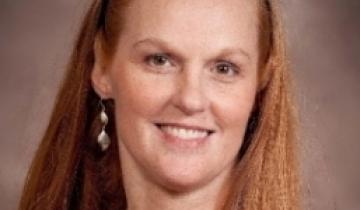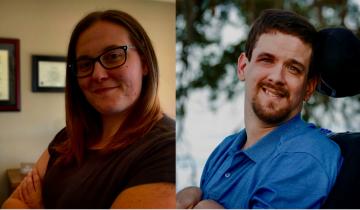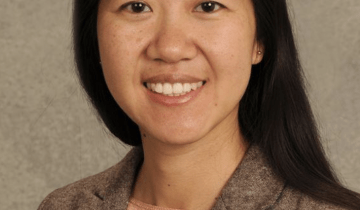Bimanual therapy, also referred to as intensive bimanual training, engages patients in active play or practice to improve the use and coordination of both hands. Bimanual therapy is different from similar unimanual therapies, like constraint-induced movement therapy (CIMT), because it promotes simultaneous use of both hands.
This study highlights caregiver knowledge and preferences to understanding the GMFCS and how that information should be relayed from clinicians.
The GMFCS, MACS and CFCS are all tools used by therapists and researchers to help classify the functional capabilities of individuals with CP. This research article provides evidence of their stability over time.
The GMFCS can be a helpful tool in clinical and research use and has been shown to be stable and accurate over time. It can also help individuals and families better understand cerebral palsy.
In this 2022 episode of "Let's Talk CP" host Jen Lyman talks with neurosurgeon, Dr. Debbie Song, and physiatrist, Dr. Marcie Ward about their role in the care of Cerebral Palsy at Gillette Children's.

Adults with Cerebral Palsy have unique care needs related to physiological changes that occurred with growth and development with Cerebral Palsy, including mental health, yet experience many barriers to proper care.
Powered mobility has the ability to do so much more than help an individual get from point a to point b. Check out this episode of Cerebral Palsy Health with researcher Lisa Kenyon, PT, DPT, PhD to learn more.

Early powered mobility has been shown to improve cognition in children with multiple, complex disabilities.
In this new 2022 episode of "Let's Talk CP" host Cynthia Frisina talks with Dr. Tom Novacheck and Dr. Andrew Georgiadis from Gillette Children's about gait, gait analysis, and what makes Gillette Children's such a special place.

The purpose of this study is to explore the breast cancer screening experiences of women with CP with the aim of identifying factors that could improve screening rates for women with disabilities.
Adults with Cerebral Palsy have unique care needs related to physiological changes that occurred with growth and development with Cerebral Palsy, including mental health, yet experience many barriers to proper care.
Though the initial insult or injury to the brain that causes cerebral palsy is non-progressive, aging with cerebral palsy and lack of physical activity during critical periods of development can impact biologic and metabolic function for adults with cerebral palsy.
Individuals with disabilities have opportunities to work, receive employment training and coaching, benefits counseling and save money without losing means tested benefits. This podcast discusses these options.

Cohort-based whole exome and whole genome sequencing and copy number variant (CNV) studies have identified genetic etiologies for a sizable proportion of patients with cerebral palsy (CP). These findings indicate that genetic mutations collectively comprise an important cause of CP.
We rely on assistive technology for everything from holding utensils better to using a complex communication device. Makers Making Change is helping to create both custom and affordable assistive tech for all abilities and needs.

Almost all of us can vividly conjure up an episode of being bullied that occurred in our own lives. Hopefully, fewer of us will have memories of being the bully. These experiences and remembrances often are formative, perceived as hurtful, and can have a long term impact on our health and well-being. For me the memory of being the center of attention in a negative way never quite fades, but with age, the perspective changes to a challenge.
Don't miss Part 2 of this very special podcast series when podcast host Cynthia Frisina dives deeper with Michael Kutcher into his life growing up with cerebral palsy, his "coming of age" as the twin brother of actor Christopher "Ashton" Kutcher, and what Michael is doing now with his new "diffability" concept and continued advocacy work on behalf of people with disabilities and organ transplants recently featured in Forbes Magazine https://www.forbes.com/sites/karlmoore/2021/07/08/michael-kutcher-on-turning-obstacles-into-opportunities/?sh=6ed0e70f722f

Can there be a genetic cause of Cerebral Palsy in some cases? Let's Talk CP host, Cynthia Frisina talks with Dr. Michael Kruer about this topic and his ground-breaking research in Part 2 of a two-part discussion about the possible genetic causes of CP. When Michael Kruer was in medical school, he knew he wanted to work with children. With advancements in gene therapy opening up incredible opportunities in neuroscience, he realized he could be a part of something much bigger than himself and give children affected by movement disorders like cerebral palsy hope that didn’t seem possible just a few years ago.

Frame Running is becoming increasingly popular as a recreational and competitive sport for individuals with cerebral palsy across all GMFCS levels. Tune in to learn more!

On this episode, I have the honor of talking with Wendy Pierce, MD, a pediatric physiatrist at Colorado Children's Hospital about physiatry, also known as Physical Medicine and Rehabilitation. This fantastic field of medicine can be helpful for individuals with cerebral palsy across with lifespan, but it has a confusing name and sometimes a confusing job description. So we set out to help listeners better understand what a physiatrist does.

On this episode I talk with two of the world’s leading researchers… Dr. Madison Paton and Dr. Iona Novak on stem cell treatment for cerebral palsy. Stem Cells have been a hot topic in Cerebral Palsy for at least 15 years now, with many parents and researchers hoping that at the least, stem cells will lessen the impact of CP and at most hold the key to a cure. Dr. Paton and Dr. Novak will share their insider knowledge into this subject and help us sort through the hype and so we can hold onto our hope.

On this episode with Dr. Amy Bailes, we discuss the Gross Motor Functional Classification System (the GMFCS), the Gross Motor Functional Measure (the GMFM), and the corresponding motor curves. The GMFCS is an important classification system that is relatively easy to understand and it helps create a shared language and framework for understanding a person with CP’s physical function. This can be very helpful for patients, families and providers of all sorts, especially as it relates to both and acceptance and understanding of the diagnosis and family-centered shared decision making.

In this episode, Mary Gannotti, PhD, PT, discusses fitness, health and function across the lifespan for individuals with cerebral palsy.

In this first episode, listeners will meet the host, Jen, learn about her background, her son, Bower, and the reason for creating this podcast. Enjoy!

Wonder what it's like to grow up as Michael Kutcher? On this episode of "Let's Talk CP" Michael Kutcher and host Cynthia Frisina dive deep into Michael's childhood and journey to adulthood - including the good, the not so good and the very surprising. You won't want to miss what Michael has to say in this very candid and intimate conversation.

